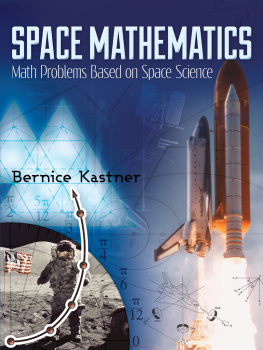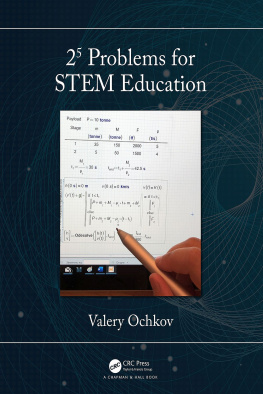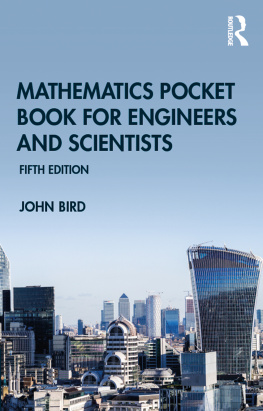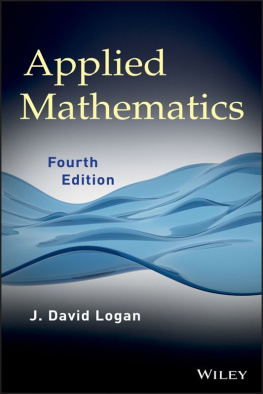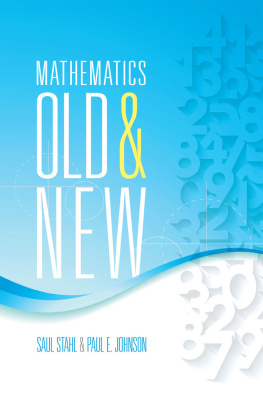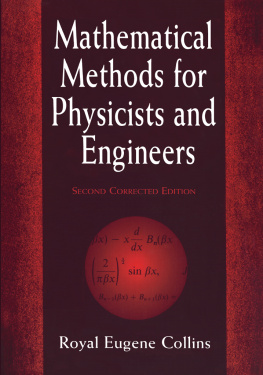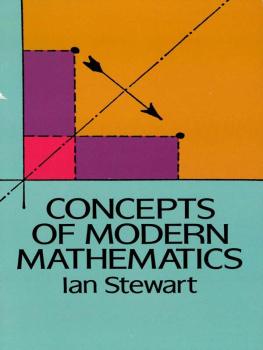SPACE MATHEMATICS
Math Problems Based on Space Science
Bernice Kastner
DOVER PUBLICATIONS, INC.
Mineola, New York
Bibliographical Note
Space Mathematics: Math Problems Based on Space Science, first published by Dover Publications in 2012, is an unabridged republication of Space Mathematics: A Resource for Secondary School Teachers, originally published by NASA, Washington, D.C., in 1985.
International Standard Book Number
ISBN-13: 978-0-486-32083-0
Manufactured in the United States by Courier Corporation 49033501
www.doverpublications.com
INTRODUCTION
H igh School mathematics teachers have long been aware that their students should know not only something about the development of pure mathematics but also something about its applications. Several years ago NASA, recognizing the appeal of aerospace activities, initiated and supported the development of curriculum supplements for several high school courses. Because attainments in aerospace would not be possible without mathematics, it was most appropriate that a supplementary publication dealing with space activities be prepared for teachers of mathematics.
The first mathematics curriculum supplement, Space Mathematics, A Resource for Teachers, was published in 1972. One of the most popular and oft-requested of the supplements, the book has been unavailable for several years. This volume updates the earlier work. We hope that a new generation of students will become more interested in mathematics as the result of seeing some of its significant applications in recent and current space projects. Working problems such as those in this book should enhance both the mathematical knowledge and skills of students and their appreciation and understanding of aerospace technology and achievements.
NASAs Technical Monitor for this project was Muriel M. Thorne, Educational Programs Officer, under the general direction of William D. Nixon, Chief of Education Services, NASA.
National Aeronautics and Space Administration
Washington, D.C.
September 1985
PREFACE
I n 1972, a collection of mathematical problems related to space science entitled Space Mathematics, A Resource for Teachers was published by the Educational Programs Division of the National Aeronautics and Space Administration (NASA). As an early user of that publication, I can say that it has been both a pleasure and a challenge for me to undertake the revision of that volume of enrichment materials, especially in the light of another twelve years of activity in space exploration. This interval has been a period of much progress in both the science and the technology associated with the space program, and it has offered a wealth of new material in which to find applications of high school mathematics.
The basic format of the original publication has been retained, as well as many of the classical problems and those which complemented the new material. In developing the examples and problems presented here, we have aimed at preserving the authenticity and significance of the original setting while keeping the level of mathematics within the secondary school curriculum. The problems have been grouped into chapters according to the predominant mathematical topic. Within each chapter we have attempted, as far as possible, to group problems involving similar themes. There is a wide range of sophistication required to solve the various problems. Since this is a resource book for teachers, we have assumed that the reader will be interested not only in problems that can be brought directly into the classroom, but also in those that, although beyond the current level of their students, will increase the teachers own awareness of some of the interesting applications of mathematics in the space program.
Perhaps the most valuable potential of a collection such as this lies in its ability to convey a sense of how secondary school mathematics is actually used by practicing scientists and engineers. Attitudes and approaches may thereby be fostered, on the part of teachers, that can help students to be more insightful users of the mathematics they learn. The present school mathematics curriculum, for example, gives no hint that many real-world problems do not have analytic solutions in closed form but may nevertheless be satisfactorily "solved" by using carefully chosen approximations or the numerical methods made possible by modern computers.
In this connection, we stress that in order to use numerical analysis correctly or to make good approximations, it is necessary to know something of the theoretical background of the subject and to understand the concepts of precision and accuracy and the use of significant digits. Also, methods that reveal meaningful aspects of a procedure are preferable to purely algorithmic prescriptions; the perhaps unfamiliar "factor unit" method of unit conversion presented in is actually quite commonly used in science and engineering. It not only removes all uncertainty about whether to multiply or divide by a conversion factor but also is far more likely to contribute to an understanding of the underlying concepts than, for example, the more usual metric system algorithm expressed in terms of "moving" the decimal point.
Many NASA staff members contributed time and thought to this project, including personnel at the Goddard Space Flight Center, the Marshall Space Flight Center, the Jet Propulsion Laboratory, the Langley Research Center, and NASA Headquarters in Washington, D.C. These people, too numerous to mention individually, provided enthusiastic support, which is gratefully acknowledged.
Project Associate James T. Fey, of the University of Maryland, and reviewers Louise Routledge, Father Stanley J. Bezuszka, Gary G. Bitter, and Terry E. Parks, of the National Council of Teachers of Mathematics (NCTM) provided valuable comments and suggestions.
On the editorial and support side, I would like to thank the staff at the NCTM Reston office and Muriel M. Thorne, Educational Programs Officer at NASA Headquarters.
Bernice Kastner
Simon Fraser University
September 1985
CHAPTER ONE
MATHEMATICAL ASPECTS OF SOME RECENT NASA MISSIONS

Launch of the Space Shuttle Challenger on
June 18, 1983.
T eachers of mathematics, like most adults in todays world, can hardly fail to be aware of the rapid development of space science. We realize that the spectacular achievements of the space program have depended heavily on mathematicsmathematics that is generally complex, advanced, and well beyond the level of most secondary school curricula. Even though this perception is valid, there are many significant aspects of space science that can be understood using only high school mathematics.
The exploration of space naturally uses the tools and techniques of astronomy. Astronomy in turn is gaining much new information as a result of sending scientific probes and satellites beyond Earths atmosphere. Because astronomy has stimulated the growth of many of the concepts and methods of mathematics, the high school teacher will find here much that is familiar. However, in some instances the way mathematics is used to solve real-life problems is rather different from methods emphasized in school courses.
In this opening chapter, we shall examine several recent achievements of the National Aeronautics and Space Administration and identify mathematical ideas and questions that may be of interest to high school teachers and students. When appropriate, we will refer to a problem illustrating some aspect of the subject and worked elsewhere in the book.
Next page
